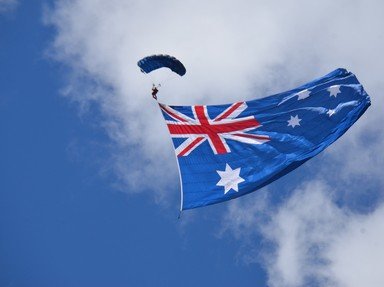Quiz Answer Key and Fun Facts
1. A world champion from 1933 to 1950, Walter Lindrum defied all changes of rules that were designed to slow down his freakish scoring ability. What sport did he dominate?
2. Born in 1938, which tennis player was the first to win the Grand Slam twice?
3. Which Sydney-born legend of swimming took up swimming to help overcome asthma. This person was the first swimmer to win the same event at three successive Olympics. Who is it?
4. Which West Australian represented his state in cricket, and captained his country in field hockey?
5. Between 1962 and 1977, Heather McKay dominated the world of squash. How many times did she win the British Open (recognised as the unofficial world championship) in those 16 years?
6. Which touring car driver was known as the 'King of the Mountain'?
7. Which Australian racehorse was the first to exceed one million dollars in prizemoney?
8. Most Australian Rules football fans would be familiar with the song 'Up There, Cazaly', but do you know Cazaly's first name?
9. Who was the first Australian Aboriginal to win a world title, in any sport?
10. What did tuna fisherman Dean Lukin do at the 1984 Los Angeles Olympics that had never been achieved by an Australian?
11. Which Australian was voted France's most popular sportsman in 1928?
12. Who was Australia's first Olympian, and also Australia's first Olympic gold medallist?
13. Which Rugby League player kicked 7 goals from 7 attempts to help Queensland win the inaugural State of Origin game?
14. Kerry Saxby (later Saxby-Junna) set 27 National records, held 32 world marks and appeared in three Olympics in her chosen sport. What sport?
15. Who won four successive surfing titles and was inducted into the Surfing Walk of Fame, California, in 1995?
16. Sir Jack Brabham holds a unique record in Formula 1 racing. What is it?
17. Which Australian swimming champion saved a swimmer from a shark attack in 1922 and won six Olympic medals spread over 16 years?
18. Which Queensland-born netball player retired in 1999, with 99 international caps to her credit?
19. Which Australian golfing legend won the New Zealand Open nine times?
20. Which legend was the first Australian cricketer to be knighted, in 1949?
Source: Author
ozzz2002
This quiz was reviewed by our editing team before going online.
Any errors found in FunTrivia content are routinely corrected through our feedback system.

